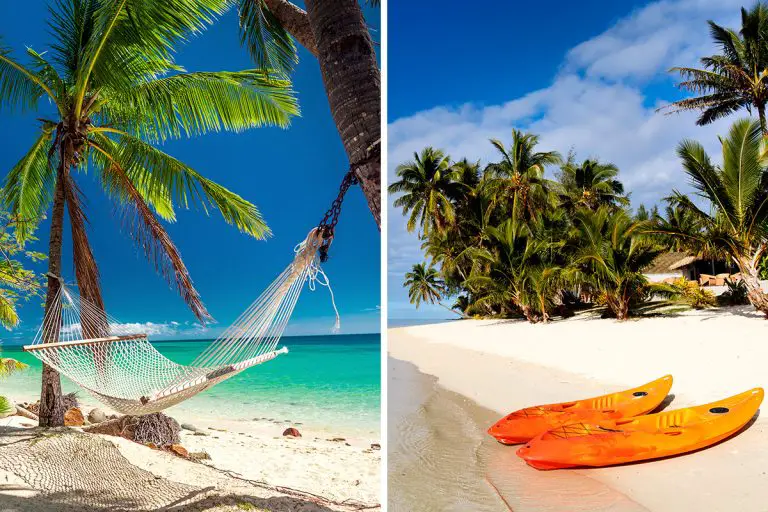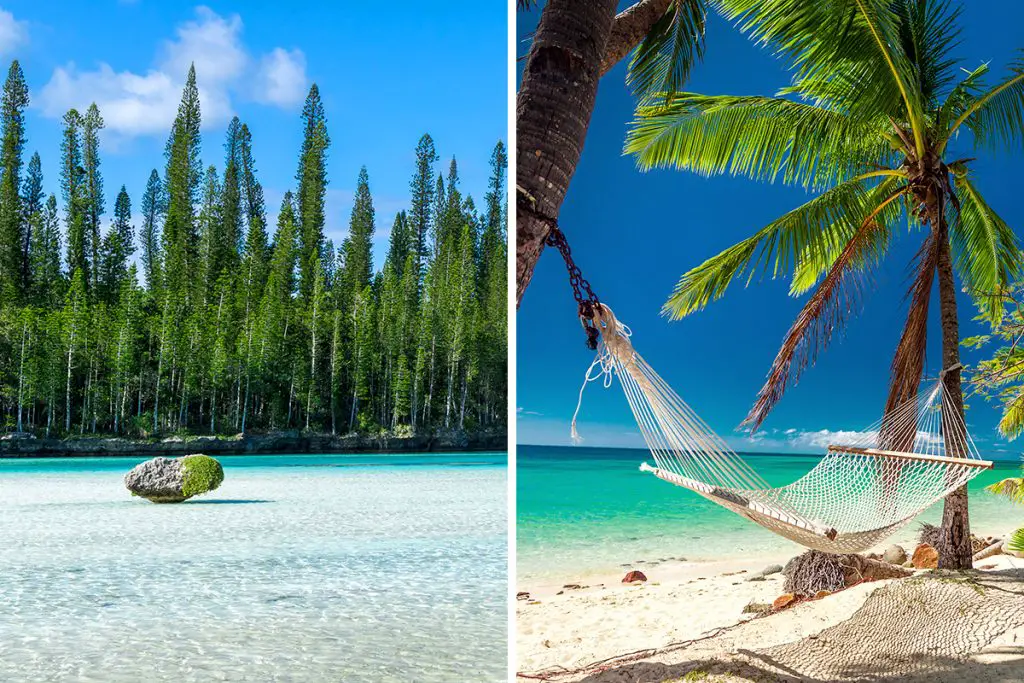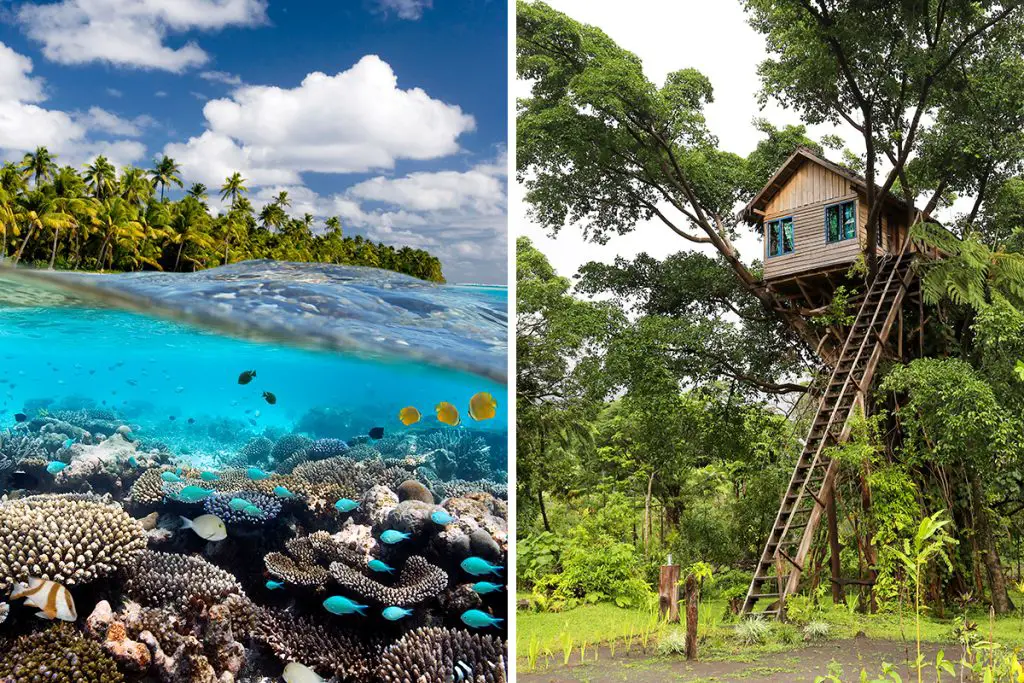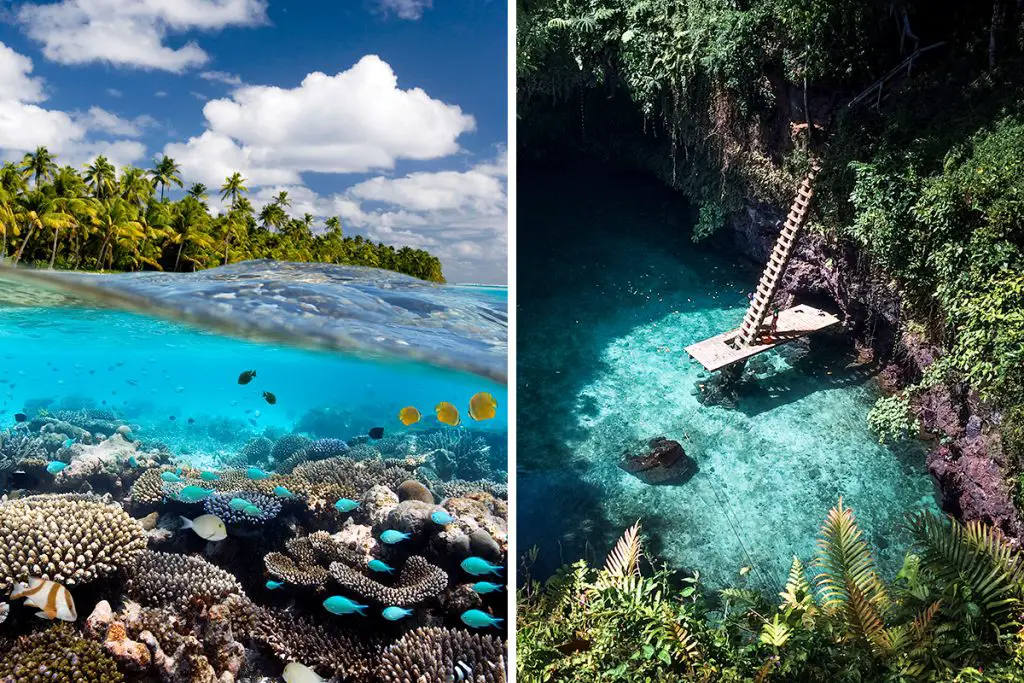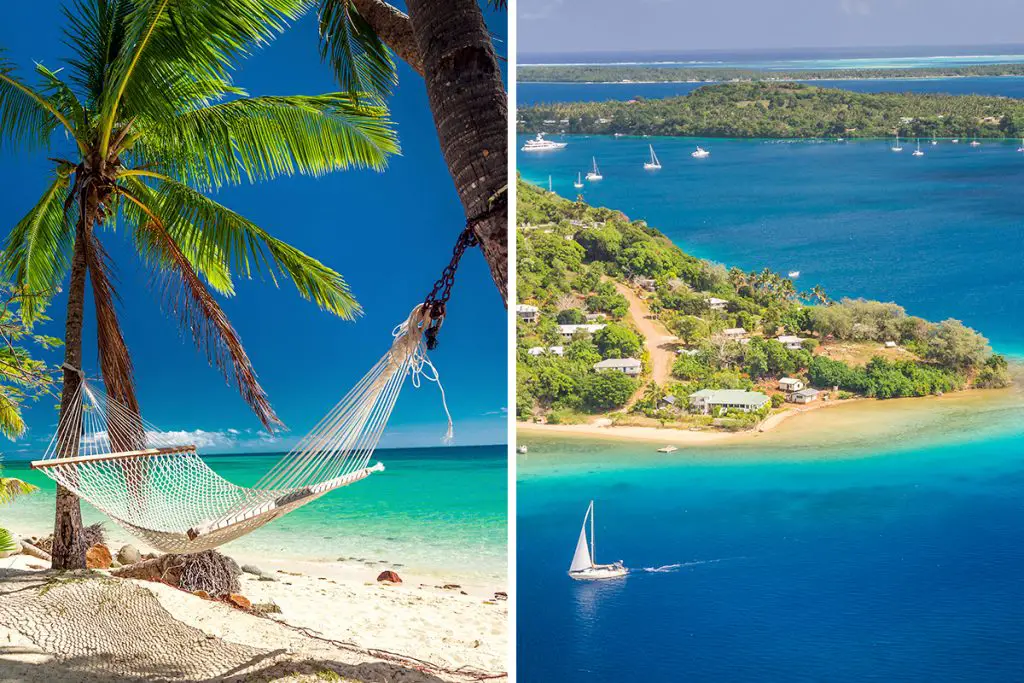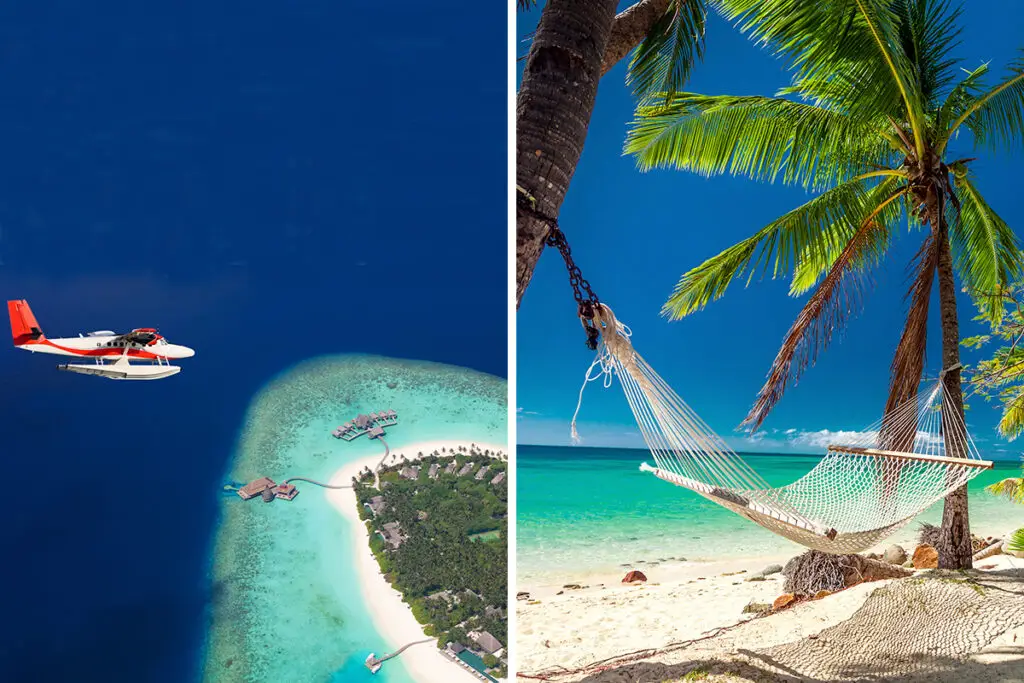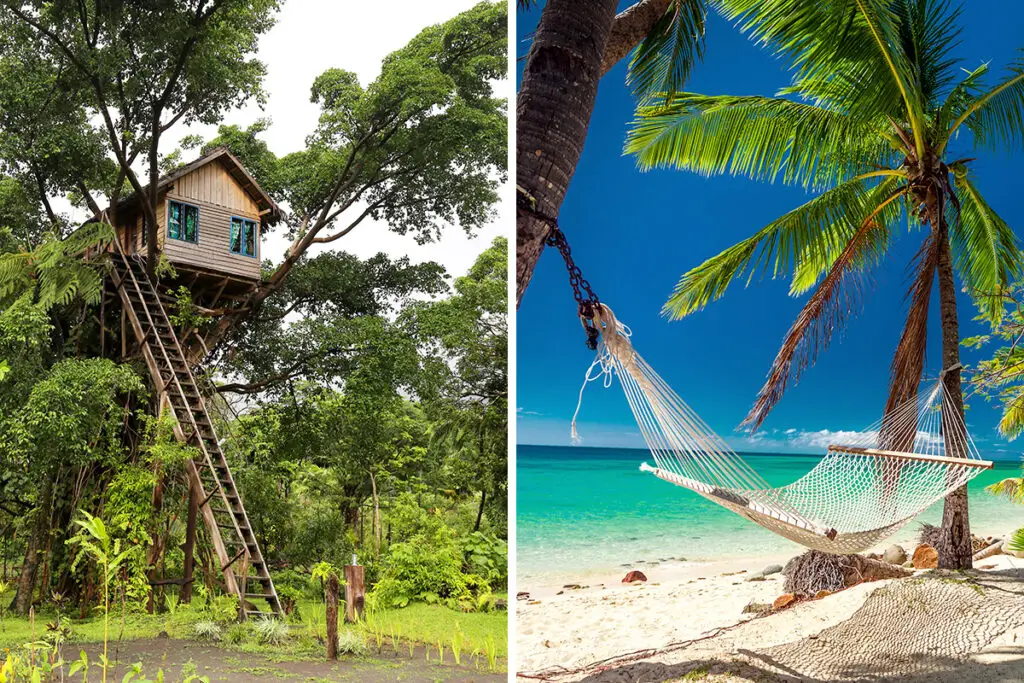Whether you’re a history buff, a nature enthusiast, or simply someone who enjoys exploring different cultures, both destinations hold a treasure trove of experiences waiting to be discovered. Get ready to dive deep into the rich tapestry of history and culture that makes these islands truly special. Which one will call out to your heart? Continue reading to find out.
History & Culture
Fiji and Rarotonga, while both set in the South Pacific, each boast a rich history and vibrant culture that makes them unique.
In Fiji, you’re immersed in a fascinating blend of Melanesian, Polynesian, Indian, Chinese, and European influences, each contributing to a multicultural tapestry that is reflected in everything from language to cuisine. This melting pot of cultures is a result of Fiji’s history as a crossroad in the Pacific, with its abundant resources attracting different groups throughout centuries.
Over in Rarotonga, the largest island in the Cook Islands, the cultural imprint is more homogenous, yet no less interesting. Here, Polynesian heritage is strong, influencing everything from art to architecture. Traditions are kept alive and well, with dance, music, and storytelling a key part of life.
Historically, both islands have experienced their fair share of encounters, with Fiji having a complex history of tribal warfare and British colonial rule, while Rarotonga was part of the greater Polynesian migration and experienced Western contact in the 16th century.
In both Fiji and Rarotonga, respect for nature and community play a significant role in their cultures. However, the manifestations of these values may differ. In Fiji, the community is often centered around a village structure, while in Rarotonga, the traditional land division system remains prominent.
In conclusion, whether you’re drawn to the multicultural vibrancy of Fiji or the strong Polynesian traditions of Rarotonga, both offer rich cultural experiences. The choice depends on what kind of cultural immersion you seek on your journey.
Attractions & Activities
As you delve into the diverse attractions and activities of Fiji and Rarotonga, you’ll realize how each of these islands promises a unique adventure tailored just for you.
In Fiji, your curiosity might lead you to the vibrant capital city, Suva, where you can explore the Fiji Museum, home to archaeological artifacts dating back 3,700 years. If you’re a fan of outdoor activities, a trek through the lush terrain of Bouma National Heritage Park on Taveuni, also known as the ‘Garden Island’, could quench your thirst for natural beauty.
Rarotonga, on the other hand, has its own set of intriguing adventures. You could immerse yourself in the local culture at Te Vara Nui Village, where you can enjoy traditional performances and learn about the island’s history.
For a taste of the island’s natural splendor, you can head to the Ikurangi Eco Retreat, an eco-friendly escape with breathtaking views of the lush landscape and serene waters.
Each island offers opportunities to get up close and personal with their unique marine life. In Fiji, the soft coral capital of the world, you can enjoy diving in the Rainbow Reef or the Great White Wall, while Rarotonga offers guided lagoon cruises and chances to see turtles at the Aroa Marine Reserve.
In summary, both Fiji and Rarotonga offer a wide range of attractions and activities that can appeal to all sorts of travelers. Whether it’s the vibrant history of Fiji’s capital or the eco-friendly retreats of Rarotonga, you’re guaranteed to find something that suits your tastes.
Beaches
When it comes to beachfront relaxation, both Fiji and Rarotonga come into their own, each with a distinctive charm.
The beaches of Fiji span over 1,600 kilometers (approximately 994 miles) offering a variety of experiences. The Yasawa Islands, with their picture-perfect beaches, are a favorite spot for many. Here, you can laze on the soft white sand, dip into the crystal-clear waters, or explore the marine life in the surrounding coral reefs.
Rarotonga, in comparison, is a smaller island with its beachfront stretching over 32 kilometers (approximately 20 miles). The island is home to Muri Beach, renowned for its clear turquoise waters and white sands. This beach is a haven for water sports enthusiasts, with activities ranging from snorkeling to paddleboarding.
While both destinations offer stunning beaches, there is a clear contrast in terms of scale and variety. Fiji, with its vast coastline, offers a wide range of beach experiences, whereas Rarotonga provides a more intimate and concentrated beach experience.
So, as you’re contemplating your next beach holiday, consider what kind of experience you’re after. Would you prefer the diverse offerings of Fiji’s expansive coastline or the concentrated charm of Rarotonga’s beaches? The decision is yours to make!
Eating, Drinking & Nightlife
Embarking on a culinary journey in Fiji and Rarotonga is a feast for the senses. Both islands offer unique flavors and vibrant nightlife, but the experiences are as different as night and day.
When it comes to eating, Fiji’s cuisine is a melting pot of flavors. You might want to try kokoda, a Fijian-style ceviche, or indulge in a traditional lovo feast, where food is cooked in an earth oven. For a sweet treat, don’t miss out on tasting the fresh tropical fruits that Fiji has to offer.
Rarotonga, in contrast, offers a different flavor palette. The island is famous for its seafood dishes, especially ika mata, a raw fish salad marinated in citrus and coconut cream. You might also like to try rukau, a local dish made from taro leaves.
Fiji’s drinking scene is renowned for kava, a traditional Fijian drink with an earthy flavor that you can enjoy in kava ceremonies. Meanwhile, in Rarotonga, you could sample locally brewed beers from Matutu Brewery or enjoy a tropical cocktail by the beach.
As for nightlife, Fiji offers a lively scene with fire dancing shows and live music in beachfront bars, particularly in the Denarau area. On the other hand, Rarotonga’s nightlife is more laid-back with island night shows featuring traditional Cook Islands music and dance.
In summary, Fiji and Rarotonga each offer distinct culinary and nightlife experiences. Whether it’s the diverse food offerings and vibrant nightlife of Fiji or the fresh seafood and relaxed evening entertainment in Rarotonga, there’s something to suit your taste.
Shopping
When it comes to shopping, Fiji and Rarotonga provide unique treasures that are a testament to their rich cultures and local craftsmanship.
In Fiji, the bustling markets of Suva and Nadi are a shopper’s delight. Here, you’ll find a variety of traditional Fijian crafts, from masi (bark cloth) and woven baskets to wooden carvings. If you’re into fashion, you might want to check out the boutiques in the Port Denarau Shopping Centre for Fijian-made clothing and accessories.
On the other hand, Rarotonga offers a different shopping experience. Punanga Nui Market in Avarua is a must-visit. Here, you’ll discover handcrafted jewelry, vibrant sarongs, and intricate woodwork. Don’t forget to look for black pearls, a specialty of the Cook Islands, to take home as a souvenir.
Both destinations offer ample opportunities to find unique souvenirs and gifts. Whether you’re wandering through the markets of Fiji or exploring the stalls in Rarotonga, you’re sure to find something special to remember your trip by.
Accommodation
Whether you’re planning a family vacation, a romantic getaway, or an adventure trip, finding the right place to stay is key. Both Fiji and Rarotonga offer a range of accommodations to fit your needs, each with its own charm.
Fiji is known for its luxury resorts spread across its stunning islands. Places like the InterContinental Fiji Golf Resort & Spa and the Sheraton Resort & Spa offer world-class amenities. On the other hand, if you’re on a budget, you can find plenty of affordable guesthouses and budget hotels, particularly in Nadi and Suva.
Rarotonga, while smaller, doesn’t fall short in its accommodation offerings. Here, you can find beachfront bungalows and villas perfect for a tranquil retreat. The Rarotongan Beach Resort & Lagoonarium and Pacific Resort Rarotonga are just some examples of the top-notch accommodation options available.
In a nutshell, your stay can be as lavish or as low-key as you want it to be. Whether you choose Fiji’s luxury resorts or Rarotonga’s beachfront retreats, both destinations ensure you have a comfortable and memorable stay.
Family-Friendliness & Children’s Activities
Taking your family to a new destination requires some thoughtful planning, especially when it comes to activities for children. Luckily, Fiji and Rarotonga are excellent choices for family holidays, each offering a wealth of activities that kids will love.
Fiji is a paradise for families. Resorts often offer kid’s clubs with a wide array of activities, from Fijian arts and crafts to water sports. Your kids can learn how to weave baskets, make coconut jewelry, or play traditional games with the friendly staff.
Off-resort, you can visit Kula Wild Adventure Park, where kids can interact with local wildlife. They can feed turtles, hold iguanas, or zip-line through the forest.
On the other hand, Rarotonga, with its safe and friendly environment, is also perfect for family getaways. You can take your little ones snorkeling in the shallow lagoon waters or engage in a cultural village tour for a fun and educational experience. They can see colorful fish and coral reefs, learn about the history and customs of the Cook Islands, or watch a fire-dancing show.
So, if it’s a family-friendly destination you’re after, both Fiji and Rarotonga have you covered. Your kids are guaranteed to have a blast, while you enjoy some much-needed relaxation.
Getting There & Getting Around
Now that you’re set on visiting either Fiji or Rarotonga, you might be wondering about the best way to get there and get around once you’re on the island.
Reaching Fiji involves flying into Nadi International Airport, which is well-connected with flights from major cities around the world. On average, the flight from Los Angeles to Nadi takes around 11 hours, covering a distance of 5,500 miles (about 8,850 kilometers).
To get to Rarotonga, you’ll need to fly into Rarotonga International Airport. From Los Angeles, the flight takes approximately 10 hours, covering a distance of 4,600 miles (around 7,400 kilometers).
Once you’re in Fiji, you can explore the islands using a variety of options. Buses, taxis, and rental cars are available on the main islands. For hopping between islands, you can take a domestic flight or a ferry.
In Rarotonga, getting around is fairly straightforward. The island has a bus service that circles the island, taxis, and rental car services. Because Rarotonga is small, you can also rent a bicycle or simply walk.
Whether you choose Fiji with its extensive network of islands or the more compact Rarotonga, both destinations are fairly accessible and offer various modes of transport to help you explore their beauty.
Weather
When you’re planning your vacation, knowing what kind of weather to expect is crucial. So, let’s look at what you might expect from the climate in Fiji and Rarotonga.
Fiji enjoys a tropical marine climate, meaning it’s warm and sunny most of the year. Temperatures average around 86°F (30°C) in the summer months (November-April) and 77°F (25°C) in the winter months (May-October). It’s also important to note that Fiji has a wet season from November to April and a dry season from May to October.
In Rarotonga, the weather is also tropical. The summer months, from November to April, are a bit warmer with temperatures averaging around 82°F (28°C), while the winter months from May to October offer cooler temperatures, averaging around 77°F (25°C). Similar to Fiji, Rarotonga also has a wet season from November to April and a dry season from May to October.
So, whether you pick Fiji with its balmy warmth or Rarotonga with its slightly cooler climes, both destinations offer delightful tropical weather, perfect for a beach holiday.
Safety
When you’re traveling, your safety and the safety of your loved ones are paramount. So, let’s talk about the safety in both Fiji and Rarotonga.
Fiji is generally considered safe for travelers. However, like anywhere, it’s still necessary to take precautions. Petty crime such as pickpocketing can occur, particularly in urban areas. As for natural hazards, cyclones can occur between November and April.
Rarotonga, on the other hand, is often cited as one of the safest islands in the Pacific. Crime is extremely low, and locals are friendly and welcoming to tourists. It’s essential to be aware of the marine life when swimming or snorkeling, as some species like stonefish can be harmful if disturbed.
In conclusion, while both Fiji and Rarotonga have their unique safety considerations, overall, both destinations are safe for travelers as long as precautions are taken.
Cost
Budgeting for your vacation is essential, and knowing the costs associated with each destination can help. So, let’s compare the costs in Fiji and Rarotonga.
In Fiji, the currency used is the Fijian Dollar (FJD). Prices for meals can range from 10 FJD ($5) for a simple meal at a local eatery to 60 FJD ($30) for a meal at a mid-range restaurant. A one-night stay at a mid-range hotel can cost around 300 FJD ($150).
Rarotonga uses the New Zealand Dollar (NZD). A meal at a local eatery may cost around 15 NZD ($10), while a more upscale dining experience could set you back 40 NZD ($27). Accommodation prices are slightly higher, with a one-night stay at a mid-range hotel averaging 200 NZD ($135).
In summary, Fiji and Rarotonga offer similar price ranges, with Rarotonga being slightly more expensive. Regardless of your choice, both destinations offer experiences to fit various budgets, making them great choices for your next vacation.
Which Is Better – Fiji or Rarotonga?
Now that we’ve delved into the details, it’s time to answer the burning question: Should your next vacation be to Fiji or Rarotonga?
In terms of history and culture, both Fiji and Rarotonga have unique and fascinating stories to tell.
Fiji’s rich cultural history is reflected in its architecture, traditions, and people, making it an ideal destination for those interested in immersing themselves in the island’s diverse culture. In contrast, Rarotonga’s history is equally compelling, marked by intriguing legends and a deep connection to the sea.
Looking at attractions and activities, Fiji is your perfect match if you love a wide range of activities, from snorkeling and diving to exploring lush jungles and local markets. But if you’re the kind who prefers a more laid-back and compact place with beautiful mountains, stunning lagoons, and an emphasis on relaxation, Rarotonga is your ideal choice.
When it comes to beaches, you won’t be disappointed with either. Fiji’s beaches are renowned for their clear waters, white sands, and vibrant marine life, making it a paradise for beach lovers and snorkelers. On the other hand, Rarotonga’s beaches offer a quieter, more serene setting, perfect for those seeking peace and tranquility.
Regarding eating, drinking, and nightlife, Fiji’s vibrant and diverse culinary scene, combined with an array of nightlife options, caters to all tastes. But don’t discount Rarotonga. It too offers a range of dining options and a more laid-back, intimate nightlife experience.
Shopping and accommodation options are quite varied in both destinations.
Fiji offers a wide range of local crafts, art, and souvenirs, and caters to a range of budgets with its accommodations. Rarotonga, on the other hand, provides a more boutique shopping experience and a range of accommodations that blend seamlessly with the island’s natural beauty.
Finally, considering family-friendliness, getting around, weather, safety, and cost, both Fiji and Rarotonga shine in their ways. Fiji is larger and offers a wider variety of activities for children, while Rarotonga’s compact size makes it easy to navigate. Both boast tropical climates, are generally safe for tourists, and offer vacation experiences for various budgets.
So, is it Fiji or Rarotonga for you? Only you can decide. Your choice hinges on what you want from your vacation. But, rest assured, whether you choose Fiji’s vibrant diversity or Rarotonga’s intimate charm, an unforgettable vacation awaits.

